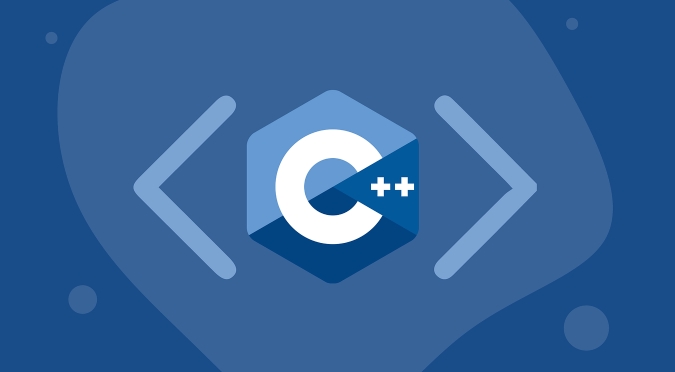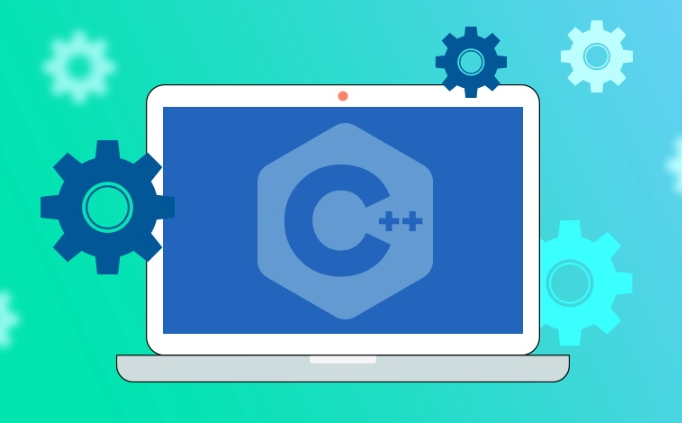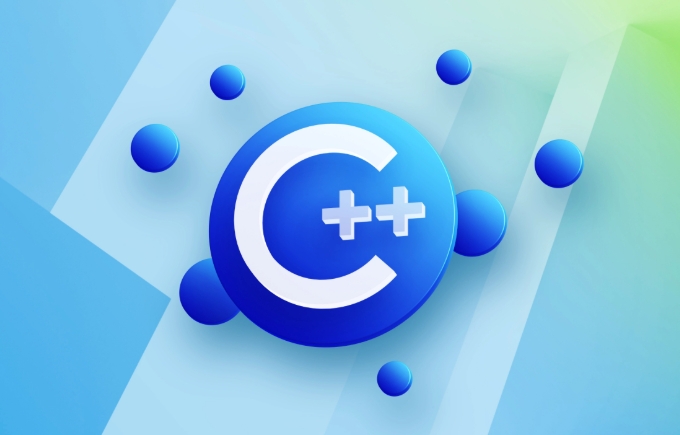Polymorphism implements runtime polymorphism through virtual functions, allowing the base class pointer to call the functions overwritten by the derived class; 1. Declare virtual functions (or pure virtual functions) in the base class so that the function can be rewritten; 2. The derived class rewrites virtual functions using the override keyword to achieve specific behavior; 3. Call functions using the base class pointer or reference to trigger dynamic binding; 4. The virtual destructor must be defined to ensure that the derived class objects are correctly destructed to prevent resource leakage, thereby fully implementing a safe and flexible polymorphic mechanism.

Polymorphism is one of the core features of C object-oriented programming. It allows the use of base class pointers or references to call functions of derived classes to implement "one interface, multiple behaviors". The most common way to implement it is through virtual functions .

Below is a simple C polymorphism example showing how to implement runtime polymorphism through virtual functions.
? Basic example: animal call polymorphic
#include <iostream>
#include <vector>
using namespace std;
// Base class (abstract interface)
class Animal {
public:
virtual void makeSound() const {
cout << "Animal makes a sound" << endl;
}
// Virtual destructors are very important! Used to correctly release derived class object virtual ~Animal() = default;
};
// Derived class: Dog class Dog: public Animal {
public:
void makeSound() const override {
cout << "Woof! Woof!" << endl;
}
};
// Derived class: cat class Cat: public Animal {
public:
void makeSound() const override {
cout << "Meow! Meow!" << endl;
}
};
// Derived class Bird : public Animal {
public:
void makeSound() const override {
cout << "Chirp! Chirp!" << endl;
}
};
int main() {
// Use base class pointers to store different types of animals vector<Animal*> animals = {new Dog(), new Cat(), new Bird()};
// Polymorphic call: same interface, different behaviors for (Animal* animal: animals) {
animal->makeSound(); // Call makeSound() rewrites each
}
// Clean memory for (Animal* animal : animals) {
delete animal;
}
return 0;
}? Output result:
Woof! Woof! Meow! Meow! Chirp! Chirp!
? Key points description:
-
virtual void makeSound(): declared as a virtual function in the base class, indicating that this function can be rewritten in the derived class. -
override: Make sure that the function really rewrites the virtual functions of the base class to improve code security. -
virtual ~Animal() = default;: The virtual destructor is necessary , otherwise the destructor of the derived class will not be called when deleting the base class pointer, resulting in resource leakage. - The base class pointer (
Animal*) can point to any derived class object. WhenmakeSound()is called, the version of the corresponding object will be automatically called - this is runtime polymorphism .
? Go further: Pure virtual functions and abstract base classes
You can also define makeSound as a pure virtual function , and the forced derived class must implement it:

class Animal {
public:
virtual void makeSound() const = 0; // Pure virtual function virtual ~Animal() = default;
};
// In this way, Animal cannot be instantiated and can only be used as an interface Then each derived class must implement makeSound() , otherwise the compilation will report an error.
? Summary: The key steps to achieve polymorphism
- Declare virtual functions (or pure virtual functions) in the base class
- Rewrite functions using
overridein derived classes - Calling functions using base class pointers or references
- Remember to define the virtual destructor
Basically that's it. This example shows the most typical and practical usage of C polymorphism, which is suitable for beginners to understand and subsequent expansion (such as combining factory patterns, container management objects, etc.).

The above is the detailed content of C polymorphism example. For more information, please follow other related articles on the PHP Chinese website!

Hot AI Tools

Undress AI Tool
Undress images for free

Undresser.AI Undress
AI-powered app for creating realistic nude photos

AI Clothes Remover
Online AI tool for removing clothes from photos.

Clothoff.io
AI clothes remover

Video Face Swap
Swap faces in any video effortlessly with our completely free AI face swap tool!

Hot Article

Hot Tools

Notepad++7.3.1
Easy-to-use and free code editor

SublimeText3 Chinese version
Chinese version, very easy to use

Zend Studio 13.0.1
Powerful PHP integrated development environment

Dreamweaver CS6
Visual web development tools

SublimeText3 Mac version
God-level code editing software (SublimeText3)

Hot Topics
 How to use cin and cout for input/output in C ?
Jul 02, 2025 am 01:10 AM
How to use cin and cout for input/output in C ?
Jul 02, 2025 am 01:10 AM
In C, cin and cout are used for console input and output. 1. Use cout to read the input, pay attention to type matching problems, and stop encountering spaces; 3. Use getline(cin, str) when reading strings containing spaces; 4. When using cin and getline, you need to clean the remaining characters in the buffer; 5. When entering incorrectly, you need to call cin.clear() and cin.ignore() to deal with exception status. Master these key points and write stable console programs.
 C tutorial on the Standard Template Library (STL)
Jul 02, 2025 am 01:26 AM
C tutorial on the Standard Template Library (STL)
Jul 02, 2025 am 01:26 AM
STL (Standard Template Library) is an important part of the C standard library, including three core components: container, iterator and algorithm. 1. Containers such as vector, map, and set are used to store data; 2. Iterators are used to access container elements; 3. Algorithms such as sort and find are used to operate data. When selecting a container, vector is suitable for dynamic arrays, list is suitable for frequent insertion and deletion, deque supports double-ended quick operation, map/unordered_map is used for key-value pair search, and set/unordered_set is used for deduplication. When using the algorithm, the header file should be included, and iterators and lambda expressions should be combined. Be careful to avoid failure iterators, update iterators when deleting, and not modify m
 C tutorial for graphics programming with OpenGL
Jul 02, 2025 am 12:07 AM
C tutorial for graphics programming with OpenGL
Jul 02, 2025 am 12:07 AM
As a beginner graphical programming for C programmers, OpenGL is a good choice. First, you need to build a development environment, use GLFW or SDL to create a window, load the function pointer with GLEW or glad, and correctly set the context version such as 3.3. Secondly, understand OpenGL's state machine model and master the core drawing process: create and compile shaders, link programs, upload vertex data (VBO), configure attribute pointers (VAO) and call drawing functions. In addition, you must be familiar with debugging techniques, check the shader compilation and program link status, enable the vertex attribute array, set the screen clear color, etc. Recommended learning resources include LearnOpenGL, OpenGLRedBook and YouTube tutorial series. Master the above
 C tutorial for competitive programming
Jul 02, 2025 am 12:54 AM
C tutorial for competitive programming
Jul 02, 2025 am 12:54 AM
Learn C You should start from the following points when playing games: 1. Proficient in basic grammar but do not need to go deep into it, master the basic contents of variable definition, looping, condition judgment, functions, etc.; 2. Focus on mastering the use of STL containers such as vector, map, set, queue, and stack; 3. Learn fast input and output techniques, such as closing synchronous streams or using scanf and printf; 4. Use templates and macros to simplify code writing and improve efficiency; 5. Familiar with common details such as boundary conditions and initialization errors.
 Using std::chrono in C
Jul 15, 2025 am 01:30 AM
Using std::chrono in C
Jul 15, 2025 am 01:30 AM
std::chrono is used in C to process time, including obtaining the current time, measuring execution time, operation time point and duration, and formatting analysis time. 1. Use std::chrono::system_clock::now() to obtain the current time, which can be converted into a readable string, but the system clock may not be monotonous; 2. Use std::chrono::steady_clock to measure the execution time to ensure monotony, and convert it into milliseconds, seconds and other units through duration_cast; 3. Time point (time_point) and duration (duration) can be interoperable, but attention should be paid to unit compatibility and clock epoch (epoch)
 What is the volatile keyword in C ?
Jul 04, 2025 am 01:09 AM
What is the volatile keyword in C ?
Jul 04, 2025 am 01:09 AM
volatile tells the compiler that the value of the variable may change at any time, preventing the compiler from optimizing access. 1. Used for hardware registers, signal handlers, or shared variables between threads (but modern C recommends std::atomic). 2. Each access is directly read and write memory instead of cached to registers. 3. It does not provide atomicity or thread safety, and only ensures that the compiler does not optimize read and write. 4. Constantly, the two are sometimes used in combination to represent read-only but externally modifyable variables. 5. It cannot replace mutexes or atomic operations, and excessive use will affect performance.
 How to get a stack trace in C ?
Jul 07, 2025 am 01:41 AM
How to get a stack trace in C ?
Jul 07, 2025 am 01:41 AM
There are mainly the following methods to obtain stack traces in C: 1. Use backtrace and backtrace_symbols functions on Linux platform. By including obtaining the call stack and printing symbol information, the -rdynamic parameter needs to be added when compiling; 2. Use CaptureStackBackTrace function on Windows platform, and you need to link DbgHelp.lib and rely on PDB file to parse the function name; 3. Use third-party libraries such as GoogleBreakpad or Boost.Stacktrace to cross-platform and simplify stack capture operations; 4. In exception handling, combine the above methods to automatically output stack information in catch blocks
 How to start learning C in 2024?
Jul 02, 2025 am 01:17 AM
How to start learning C in 2024?
Jul 02, 2025 am 01:17 AM
The key to learning C lies in the methods and rhythm. Learning C in 2024 has rich resources and tools to support. 1. Prepare the development environment: It is recommended to use tools such as VisualStudio, CLion or Xcode, or try online compilers to practice; there is no need to worry about advanced functions in the early stage, just complete "HelloWorld" first. 2. The learning content starts with basic grammar, gradually penetrates into core content such as pointers, quotations, memory management, etc., recommends "C Primer" and B station courses, and emphasizes the importance of hands-on practice. 3. Practice your hands through small projects such as calculators, grade management systems, and simple games to improve your understanding of program structure and develop good coding habits. 4. Pay attention to the particularity of C to avoid memory leakage,






